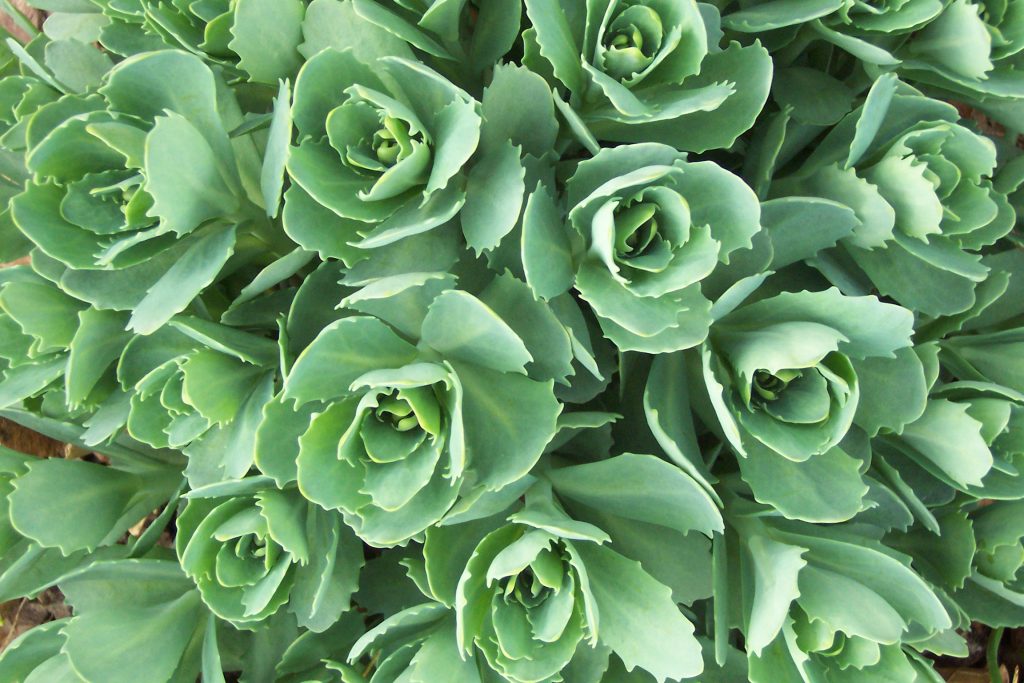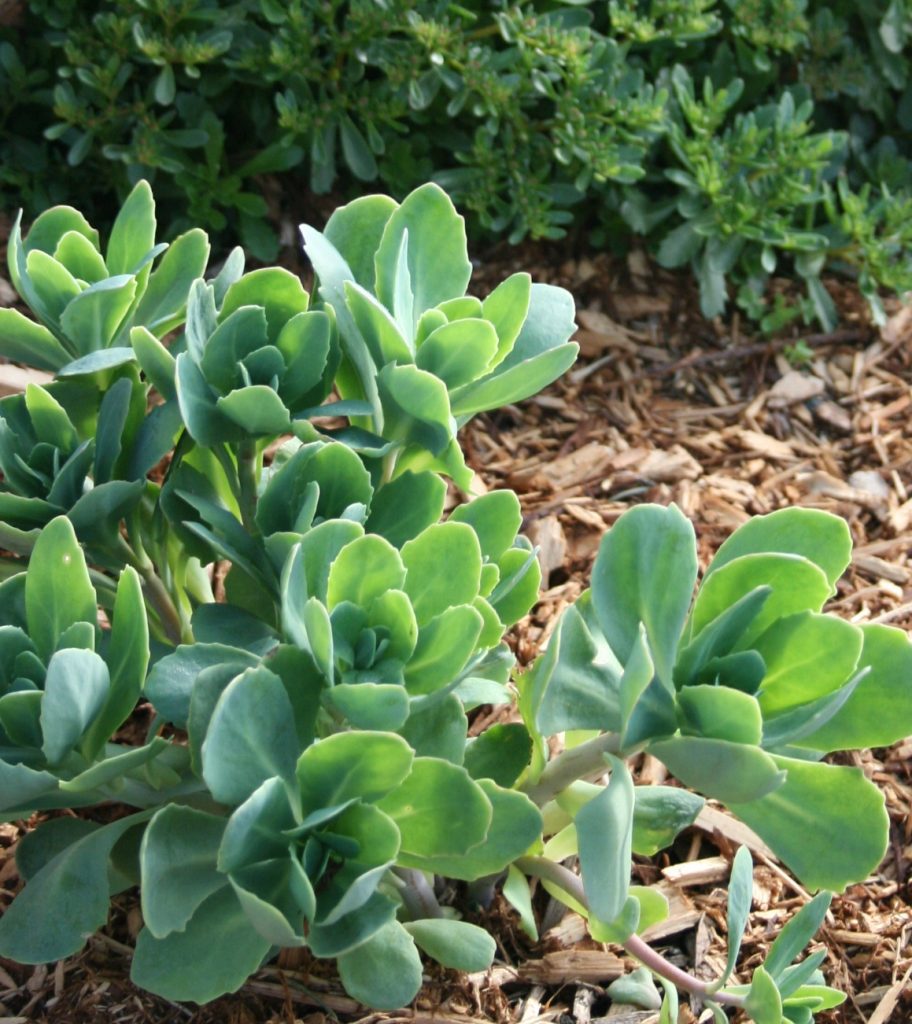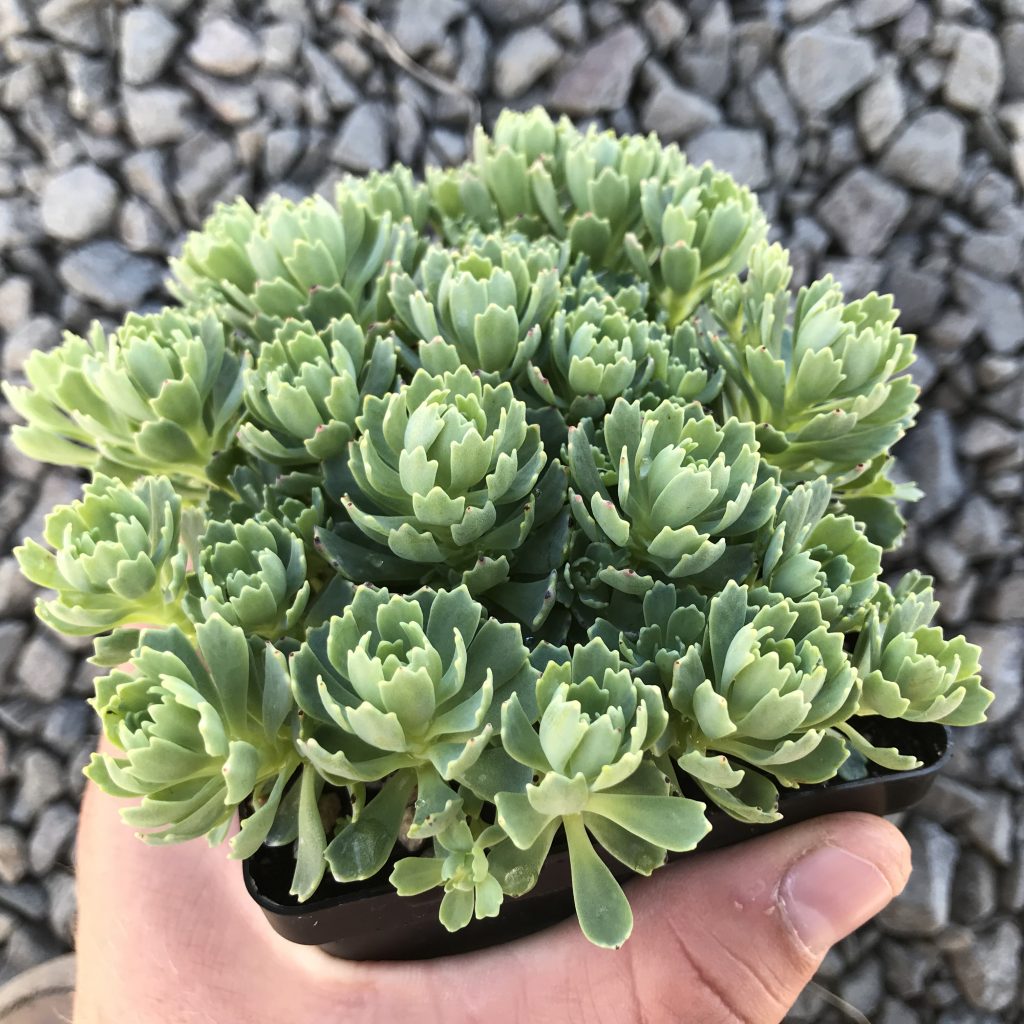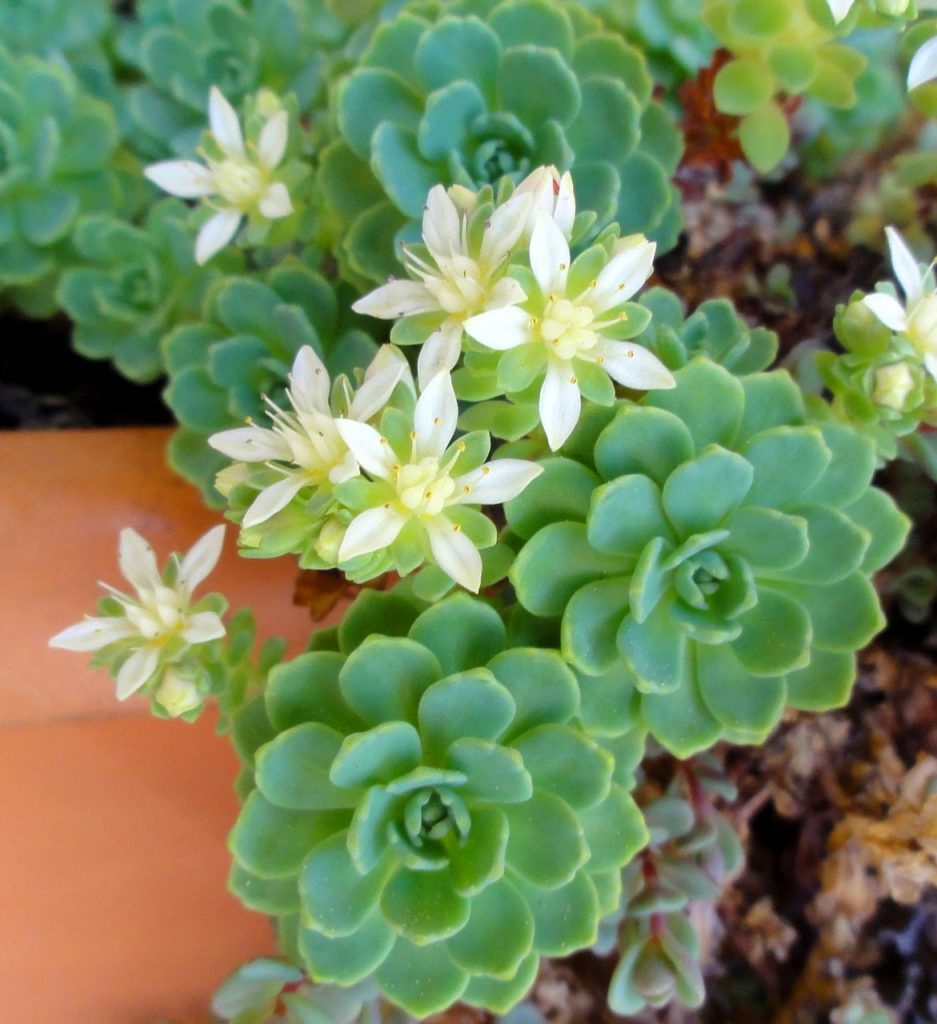Sedum Kamchatka - how to grow a plant
Kamchatka sedum (Sedum kamtschaticum) is a type of perennial plants from the jersey family. Belongs to the genus Sedum. It is used to decorate garden plots of park areas. It has several subspecies that are successfully grown in private floriculture.

Sedum Kamchatka variegata
Botanical characteristic
Far Eastern species of Sedum, which includes up to 4 dozen varieties. Widely distributed in the Far East. In the wild, it grows on rocky slopes and rocky soils. Refers to soil perennials.
Description:
- medium-sized plant, height up to 0.4 m, compact constitution, formed by numerous upright shoots rooted at the base;
- the root is dense, lignifies as it develops, is distinguished by good branching, horizontal growth;
- foliage is bright green, oblong shape, length up to 5 cm, surface often without pubescence, glossy, jagged edges, opposite or alternate arrangement;
- inflorescences are dense, corymbose, umbellate, up to 12-13 cm in diameter, formed by small flowers, up to 2 cm in size, star-shaped, yellow, orange, lemon.
Flowering occurs in June. Duration - up to 3 weeks. At the end of the budding stage, red fruits with small oblong seeds are formed.
There are similar plant crops in nature:
- sihotinsky zhivuchnik - has similar lush yellow inflorescences and compact forms;
- Kalanchoe Alexandra has the same serrated leaves and yellow buds;
- Greya's groundwort - blooms with yellow corymbose inflorescences.
Varieties
In private floriculture, several varieties are popular.

Sedum Kamchatka cultivation from seeds
- Floriferous. The most common subspecies up to 0.3 m. Weakly branched. The foliage is dark green, with jagged edges. The flowers are yellow, formed by five pointed petals.
- Weihenstephaner Gold. A hybrid derived from a flowering variety. Differs in increased endurance and intensive growth. Blooms profusely. The flowers are small, star-shaped, yellow with a green tinge.
- Variegated (Variegatum), or caramel. Variegata grows up to 0.2 m tall. The development is moderate. Variegatum does not need frequent rejuvenation and transplantation. Densely leafy. Leaves with a white border, in bright light, becomes pink or creamy. The variegatum bloom is long-lasting, variegated, with red and orange tints.
- Ellacombianum (Ellacombianum). It stands out with fleshy green leaves that turn into a red palette in autumn. It grows intensively. It is a suitable variety for the formation of rocky hills.
- Golden Carpet. Height 15-30 cm. Spreading bush.Differs in large inflorescences and a pronounced sweet smell.
- Takahira Dake. A short hybrid with compact forms. The stems have a reddish tint.
Purchase and adaptation
When purchasing a flower culture, you need to pay attention to its condition. In a healthy plant:
- bright foliage color;
- no damage to the roots;
- there are no signs of pests on the vegetative mass.
The best time to shop is spring. Over the summer, sedum will adapt to new conditions and prepare for the cold season.
No adaptation is required for growing in open areas. The sedum intended for room planting needs a two-week quarantine.
Landing features and soil requirements
Kamchatka sedum is a drought-resistant succulent that easily copes with hot climate and bright sun. It develops well on loamy and stony soils without intensive fertilizing. It quickly adapts to new growing conditions, incl. to low temperatures, because has an average frost resistance. With proper care, it can grow for over a decade, maintaining regular, abundant flowering.
For planting Kamchatka sedum in open conditions, preference should be given to alpine slides, slopes, multi-tiered flower beds and mixborders.
The main requirements for the soil are looseness, water and air permeability. Good drainage should be organized before planting. the plant is susceptible to moisture stagnation. For growing sedum, a ready-made substrate intended for succulent is suitable. You can make a soil mixture yourself. Composition:
- 2 shares of garden soil;
- 1 share of humus;
- 1 share of coarse river sand;
- 1 share of wood ash.
Ash and sand in the soil mix act as natural leavening agents.
When grown in open conditions, to create a dense creeping carpet, the bushes are planted at a fairly close distance, 10-15 cm.
Cultivation conditions
Humidity
Moisture values do not play a key role in sedum development. However, you should not place the plant near heating appliances.

Sedum Kamchatka caramel growing from seeds
In summer, in order to cleanse accumulated dust, spraying on foliage is shown.
Temperature regime
The flower culture is able to withstand high and low temperatures. Optimal mode:
in summer - about 25 ° С;
in winter - about 18 ° C.
Lighting
To maintain decorativeness, it needs bright sunlight, while it is not afraid of direct rays. When grown indoors, the southern or southeastern direction will be successful. Requires supplementary lighting in winter.
Care rules
The succulent plant is not picky and needs minimal maintenance.

Stonecrop Kamchatka sedum
Top dressing
Stonecrop is fed up to 2 times during the growing season. Overfeeding, especially with nitrogen-containing compounds, leads to a heavier bush and a loss of its decorative effect. Usually, humus or compost introduced during planting in open conditions is enough for the first 2-3 years. Additionally, minerals are added in a small dosage.
Watering
The plant needs moderate watering. Optimal mode:
- in summer - at intervals of 7-10 days;
- in the fall - in a halved version;
in winter, the succulent is not watered.
Watering should be frequent and dosed immediately after planting a flower crop. Waterlogging of the substrate and stagnation of water should not be allowed.
Transfer
Depending on the variety, young stonecrops should be replanted annually in order to provide sufficient space for the development of a horizontal root system. An adult plant does not need replanting for 4-5 years. After this period, without changing the place and soil, it begins to lose its decorative effect and attractiveness.
The preferred method of transplanting is transshipment while preserving part of the earthen coma.
Formation
When grown at home, dried peduncles and damaged old shoots are subject to pruning.When cultivated in open areas, the bush is additionally cut for the winter, leaving hemp up to 3 cm high.
A frost-resistant plant does not need shelter and powder for the cold season.
Reproduction methods
When grown at home, Kamchatka sedum is propagated by seeds, cuttings and dividing the bush.

Kamchatka sedum sedum kamtschaticum
Cuttings
The easiest way to propagate a bush. As cuttings, sprouts obtained by pruning a plant are used, or blanks are cut from the upper part of the shoots with a length of about 5-6 cm.
To root the shoots, a mixture of peat and sand is made. The seedlings are transplanted to a permanent place after 2-3 weeks, when the root system is fully formed.
Seminal
Growing from seeds is the most laborious process, delaying the beginning of flowering of a culture, not providing the transfer of the quality properties of the parent flower, but allowing new varieties to be developed.
For reproduction, the organization of greenhouse conditions is required. The planting material is sown in a container in spring or autumn, spreading over the surface of the soil and not deepening. Seed germination occurs within 2-3 weeks. Germination is affected by the temperature, which should be at least 22C and good lighting.
When the first 2-3 leaves appear, the seedlings dive into individual pots. Flowering from seed-propagated stonecrops can be expected no earlier than 3 years from the moment of sowing.
Dividing the bush
The most convenient method of propagation, allowing you to convey the varietal characteristics of the mother bush. Divide the parent plant into parts in the spring, in April-May. Each delenka should have an active shoot and roots.
When multiplying by dividing the bush, flowering occurs after a year.
Treatment of diseases and pests
Changes in appearance and loss of decorativeness are often associated with a violation of care. In rare cases, stonecrop is attacked by harmful insects. With an excess of moisture, the root system suffers first of all.
| Type of defeat | Control methods |
| Decay of stems and roots. Spots on foliage. Signs of gray and root rot. The reason is overflow and stagnation of water. | The plant is taken out of the pot. The roots are inspected for rotted areas. The affected fragments are cut off, the surviving root shoots are treated with a weak pink solution of potassium permanganate or with a fungicidal preparation. The flower is transplanted into a fresh substrate. The first 3 days after transplanting are not watered, then they adhere to the recommended moderate watering. |
| Whitish bloom on vegetative mass. It often becomes the result of waterlogging, in which powdery mildew develops - a fungal disease. | The succulent is sprayed with a fungicide and transplanted, replacing the substrate. |
| Weevil, aphid. | When pests appear, the flower must be treated with insecticides. With a slight lesion, they are limited to wiping the leaves with soapy water (50 g per 1 liter of water). |

